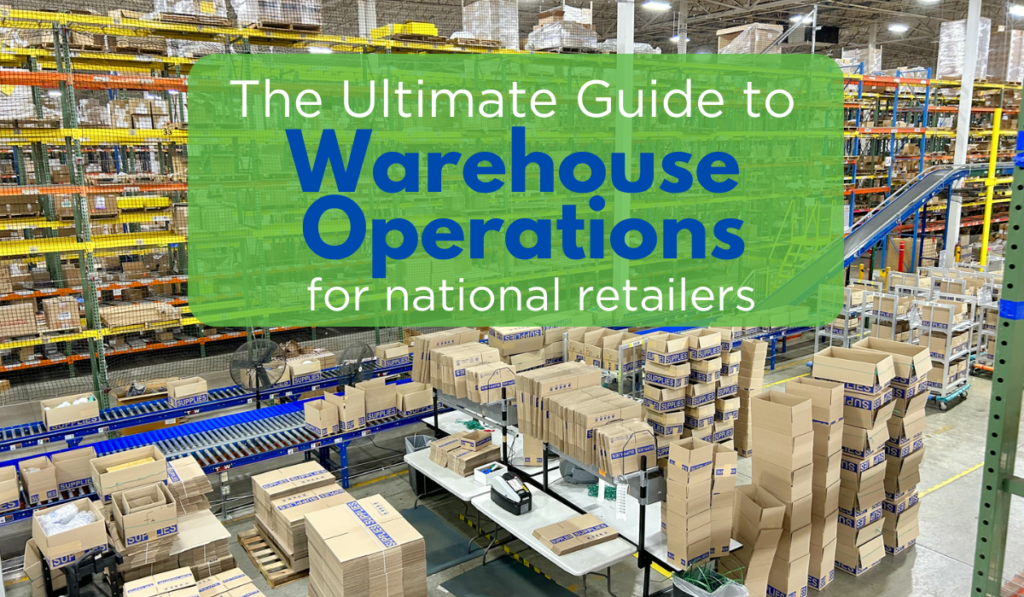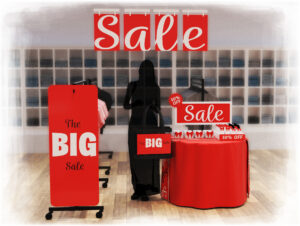Retailers know that optimizing their warehouse space and operations is critical. However, given the numerous factors involved, particularly for large retailers, achieving this requires thorough planning and significant effort.
From reducing costs to meeting rising consumer expectations for fast and accurate order fulfillment, strategic warehouse management can significantly impact your bottom line. In this guide, we’ll walk you through key strategies to enhance your warehouse efficiency and performance.
Optimizing your retail warehouse operations involves a comprehensive review of various aspects of the warehouse management process, from daily operations to functional aspects. Here are some questions you can ask to ensure your operations are running efficiently for your retail brand:
- Is our inventory accurately tracked and updated in real-time?
- Are we maintaining optimal stock levels to avoid overstocking and stockouts?
- Can our layout accommodate future growth and changes in inventory?
- Are orders processed and shipped within the required timeframe?
- Is the warehouse team regularly running into certain roadblocks?
Bunzl Retail Services provides warehousing and distribution services for many large retailers and this article will share some of the strategies we apply to keep their operations running smoothly.
- Assess Current Warehouse Performance
- Identify and Eliminate Bottlenecks
- Utilize Space Effectively
- Implement Demand Planning and Forecasting
- Embrace Technology
- Regular Workforce Training
What is warehouse optimization in retail and why is it important?
Warehouse optimization is the process of strategically working to improve the flow, operations, and success of retailers’ warehousing efforts. The goal of warehouse optimization is to enhance order speed and accuracy, reduce waste, and maintain safety and compliance.
For large and small retailers alike, proper warehouse optimization can be the difference in saving money, avoiding out-of-stock situations and opening stores on time. Enhancing warehouse efficiency also helps reduce operating costs and can increase customer satisfaction by meeting expectations and timelines.
Here are six strategies for national retailers to optimize their warehouse operations:
Assess Your Current Warehouse Performance
Begin by conducting a comprehensive audit of your current warehouse operations. Some key areas to assess include storage systems, workflow processes and technology usage. Use key performance indicators (KPIs) such as order accuracy rate, average order cycle time, and inventory turnover to measure performance. Regular audits will help you track progress over time and identify areas for improvement. For example, many retailers find that frequent performance reviews can uncover inefficiencies in their processes, which can then be addressed through targeted training and process adjustments.
Identify and Eliminate Bottlenecks
Where do your teams get held up or slowed down? Observe how orders are processed and review data to identify and target bottleneck areas that may slow down your fill rate. Talk to your warehouse team for firsthand feedback and insights that may not be revealed by a data point. Some common bottlenecks to look for include: a slow picking process, delayed restocking, and poor inventory management.
Utilize Space Effectively
Effective use of space is essential in warehousing. Bunzl Retail Services offers expertise in optimizing warehouse design to improve space utilization and streamline workflows. This includes strategic placement of high-turnover items and efficient layout planning for fast-moving SKUs.
Hopstack reported that approximately half of the time spent on order picking in warehouses or distribution centers is attributed solely to travel time. Thus, the physical layout of a warehouse can significantly impact operational efficiency.
It’s important to maximize vertical and horizontal space, and take full advantage of all shelving, mezzanines, and automated storage systems.
Outsourcing warehouse responsibilities to a partner is another solution to offload inventory, mitigate risks and decrease labor costs for retailers.
Especially for large national retailers with thousands of stores, it can be difficult to find enough space to house operational goods for stores. A partner like BRS can house operational goods-not-for-sale, leaving retailers to prioritize more profitable goods for their warehouses.
Demand Planning and Forecasting
Proper demand planning and forecasting allow retailers to optimize inventory levels and avoid stockouts and overstocking. With a collaborative approach to demand planning, retailers can also save money and reduce waste. We reviewed some specifics about our proactive approach to demand planning to enhance the supply chain for more information on our process.
Embrace Technology
More and more repetitive tasks are being replaced by technology, allowing skilled workers to take on more meaningful tasks. With travel time being one of the biggest time sucks in warehouse operations, there are many automated options available now including order picking, voice picking, pick to light, and carousels.
These options can greatly reduce time and cut redundancies. BRS utilizes warehouse technologies such as Fetch Robot, CHUCK automated picking cart and Vocollect to operate more efficiently for our partners.
Fetch Robot: An Automated Mobile Robot (AMR), Fetch Robots move independently across facilities to fulfill orders faster and automate time-consuming and repetitive material movement tasks.
CHUCK: Automated picking cart from 6River Systems, greatly reduces travel time for employees. CHUCK leads associates through their work zones to help them minimize walking, stay on task, and work more efficiently. CHUCK is a warehouse solution that can be used to improve putaway, picking, sorting, and returns tasks.
Vocollect– A voice-directed workflow solution. Vocollect audio guides workers where to go and what to pack. This releases items to the floor in waves for a more efficient way of working that can increase productivity and reduce mistakes. It offers a more sustainable option as well by avoiding printing papers.
There are also various types of automation conveyor systems, and other options for robotic pickers, and automated guided vehicles (AGVs). As always, it’s crucial to perform an in-depth cost-benefit analysis of automation options to see which is best for your needs.
Regular Workforce Training
Once you have optimized your processes, you’ll need to ensure your team applies best practices with continuous training. Make sure your warehouse team is well-trained and up-to-date on the latest procedures and efficient techniques.
Implementing continuous training, and reviewing safety and compliance are important to keep your warehouse operations safe, compliant, and effective.
Efficient warehouse operations for large national retailers include many different factors and associated challenges. In order to maximize your warehouse efforts, seek a partner who can support your business and its specific needs.
Ready to optimize your warehouse operations and stay ahead in the competitive retail market?
Contact Bunzl Retail Services today to learn how we can tailor a warehousing solution that fits your unique needs.





